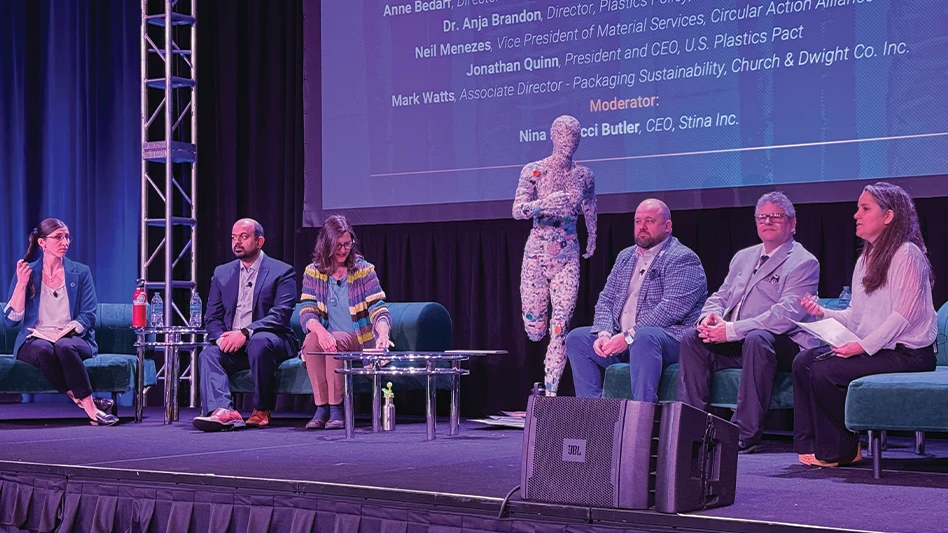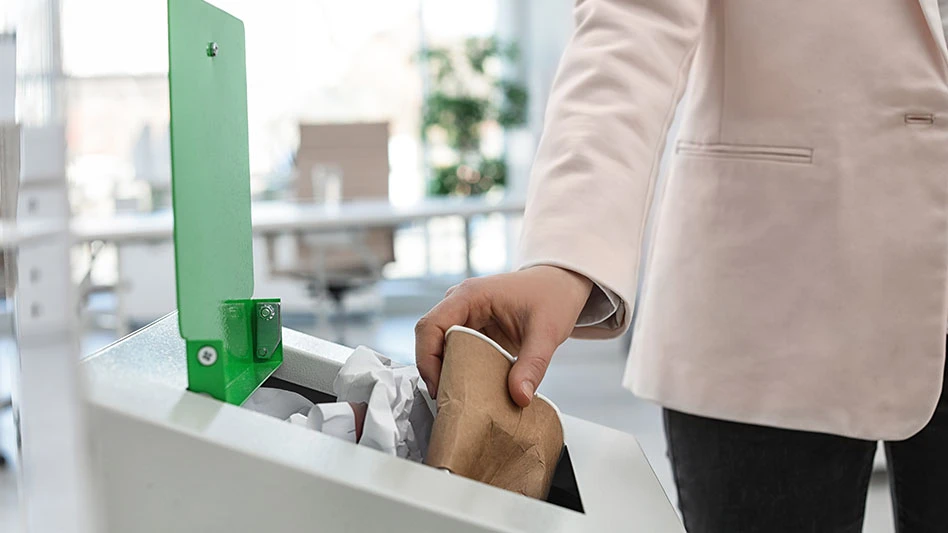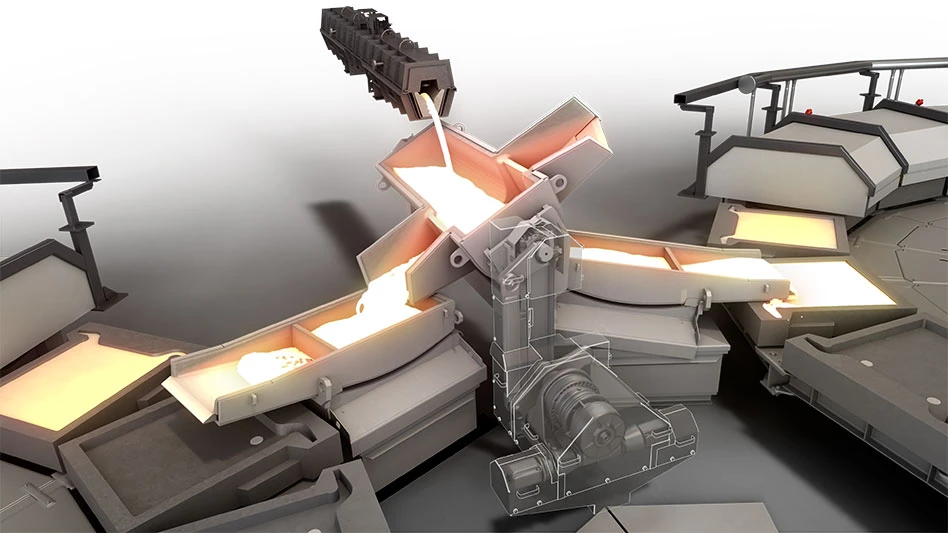
@ Mihai Andritoiu | stock.adobe.com
With a new U.S. presidential administration and looming policies overseas, recovered paper exporters are emphasizing the need for agility and adaptability in the new year.
In a Paper Industry Update Fireside Chat, hosted Jan. 15 by the Washington-based Recycled Materials Association in partnership with Davis Index, participants noted how fast the market can change and highlighted several issues impacting the recovered paper export market in 2025 and beyond.
“Most notably today, on [Jan. 15], we very well could have been kicking this off by discussing our second East Coast port strike in three months, so that right there, I think, speaks to how quickly things transpire in this business and how quickly one strategy can go right out the window,” said Jeff Rice, head of international sales at CellMark Recycling, a division of Swedish marketing and supply chain services company CellMark.
“I think the real key to get across here today is the need to be agile, the need to be able to adapt and overcome. And as we see our market, our home industry, changing with all sorts of volatility and variables, so goes the rest of the world with their own unique versions of those, whether it be foreign exchange, geopolitical fallout, shipping lane changes, weather patterns, consumer spending habits—the list goes on. We're weighing these variables every day when we're representing our suppliers, our own assets and servicing our customers around the world.”
Many of those customers are facing a policy change in Europe that has them concerned.
In October 2023, the European Union adopted a CBAM, or carbon border adjustment mechanism, to put “a fair price” on the carbon emitted during the production of carbon-intensive goods entering the EU and to encourage “cleaner industrial production” in non-EU countries. The policy aims to help the EU achieve carbon neutrality by 2050.
The EU’s CBAM is being implemented in phases and is expected to be fully in place by 2026. However, the policy initially will apply to certain products with a high carbon risk, including iron and steel, cement, fertilizers, aluminum, hydrogen and electricity.
When asked how the CBAM will affect recovered paper exports to non-EU countries like the U.S., India and Thailand, for example, Rice said the issue is “absolutely something that is front and center for our colleagues across the pond.”
“It would definitely shake up the commodity flows out of Europe and, as a result, would have a ripple effect throughout the rest of the market,” he said.
“Having worked for the government … I understand how slow governments can move and how sticky new regulations can be. I don’t think it’s different in other parts of the world. So, I’m waiting to see what actually comes of the deadline … but, certainly we are keeping an eye on it and making plans accordingly.”
Rice has overseen the Indian market the last several years after previously handling the Middle East and Southeast Asian markets, and estimated that half, “if not 60-plus percent,” of the mills in India would find it difficult to meet the criteria set by the EU to import the tons that have been moving there.
“That right there is just one example of the second largest waste paper market in the world, second now only to Thailand, and with Thailand, I receive messages daily about crackdowns from customs on a myriad of commodities coming across their borders,” Rice said. “The actual timeline and the implementation leaves some questions to be answered, but definitely it will have an effect one way or another, however it shapes up.”
Some industry players also question the fate of mixed paper exports as countries like Thailand, for example, have implemented restrictions on the recovered paper moving across their borders.
Part of the issue, Rice said, is the disconnect between inspectors and those working in the industry daily.
“There’s a disconnect between the inspectors overseas, the inspectors here and then those of us in the industry that understand the fallible nature of these grades we deal in as byproducts of the waste stream,” he said.
Sponsored Content
Still relying on manual sorters?
Let AI do the heavy lifting. Waste Robotics delivers reliable, high-performance robots tailored for complex waste streams. They require minimal maintenance, are easy to operate, and are designed to boost your recovery rates. Smarter sorting starts with the right partner. Waste Expo Booth #1969 & REMA #2843
Click here to see our robots in action!Sponsored Content
Still relying on manual sorters?
Let AI do the heavy lifting. Waste Robotics delivers reliable, high-performance robots tailored for complex waste streams. They require minimal maintenance, are easy to operate, and are designed to boost your recovery rates. Smarter sorting starts with the right partner. Waste Expo Booth #1969 & REMA #2843
Click here to see our robots in action!Sponsored Content
Still relying on manual sorters?
Let AI do the heavy lifting. Waste Robotics delivers reliable, high-performance robots tailored for complex waste streams. They require minimal maintenance, are easy to operate, and are designed to boost your recovery rates. Smarter sorting starts with the right partner. Waste Expo Booth #1969 & REMA #2843
Click here to see our robots in action!Sponsored Content
Still relying on manual sorters?
Let AI do the heavy lifting. Waste Robotics delivers reliable, high-performance robots tailored for complex waste streams. They require minimal maintenance, are easy to operate, and are designed to boost your recovery rates. Smarter sorting starts with the right partner. Waste Expo Booth #1969 & REMA #2843
Click here to see our robots in action!Sponsored Content
Still relying on manual sorters?
Let AI do the heavy lifting. Waste Robotics delivers reliable, high-performance robots tailored for complex waste streams. They require minimal maintenance, are easy to operate, and are designed to boost your recovery rates. Smarter sorting starts with the right partner. Waste Expo Booth #1969 & REMA #2843
Click here to see our robots in action!“If just looking at industry standard specifications with a grade like mixed [paper], oftentimes, it's going to be in the eye of the beholder. Oftentimes, for an inspector or a Customs agent, perception will be reality. As much as we [in the industry] … have come to understand the nature of these grades, they're not manufactured products; they're collected, they're sorted and the facilities have continued to get better and better at segregating commodities, but it's not a perfect science.”
He said it’s challenging to explain to entities overseas that what they’re seeing is actually very good-quality mixed paper because, if they have “an untrained eye,” they might still see the material as trash.
“We know it is a raw material for the manufacturing process globally, and a very valuable one at that, but educating them is a long process, and anytime you get turnover in those positions as well, you're kind of put back to the starting point,” Rice said.
“I think it's already being recognized, noting that we see more and more markets implementing inspection protocols—whether it be Thailand, whether it be Indonesia—than it was at the spring of 2019 when they implemented that. Now we see so much production in Malaysia where those inspection protocols are required as well. So, I think it's good for the industry that there's a little bit more standardization to some degree, but again, having it recognized on paper is certainly different than in practice.”
Get curated news on YOUR industry.
Enter your email to receive our newsletters.
Latest from Recycling Today
- Fenix Parts acquires Assured Auto Parts
- PTR appoints new VP of independent hauler sales
- Updated: Grede to close Alabama foundry
- Leadpoint VP of recycling retires
- Study looks at potential impact of chemical recycling on global plastic pollution
- Foreign Pollution Fee Act addresses unfair trade practices of nonmarket economies
- GFL opens new MRF in Edmonton, Alberta
- MTM Critical Metals secures supply agreement with Dynamic Lifecycle Innovations






